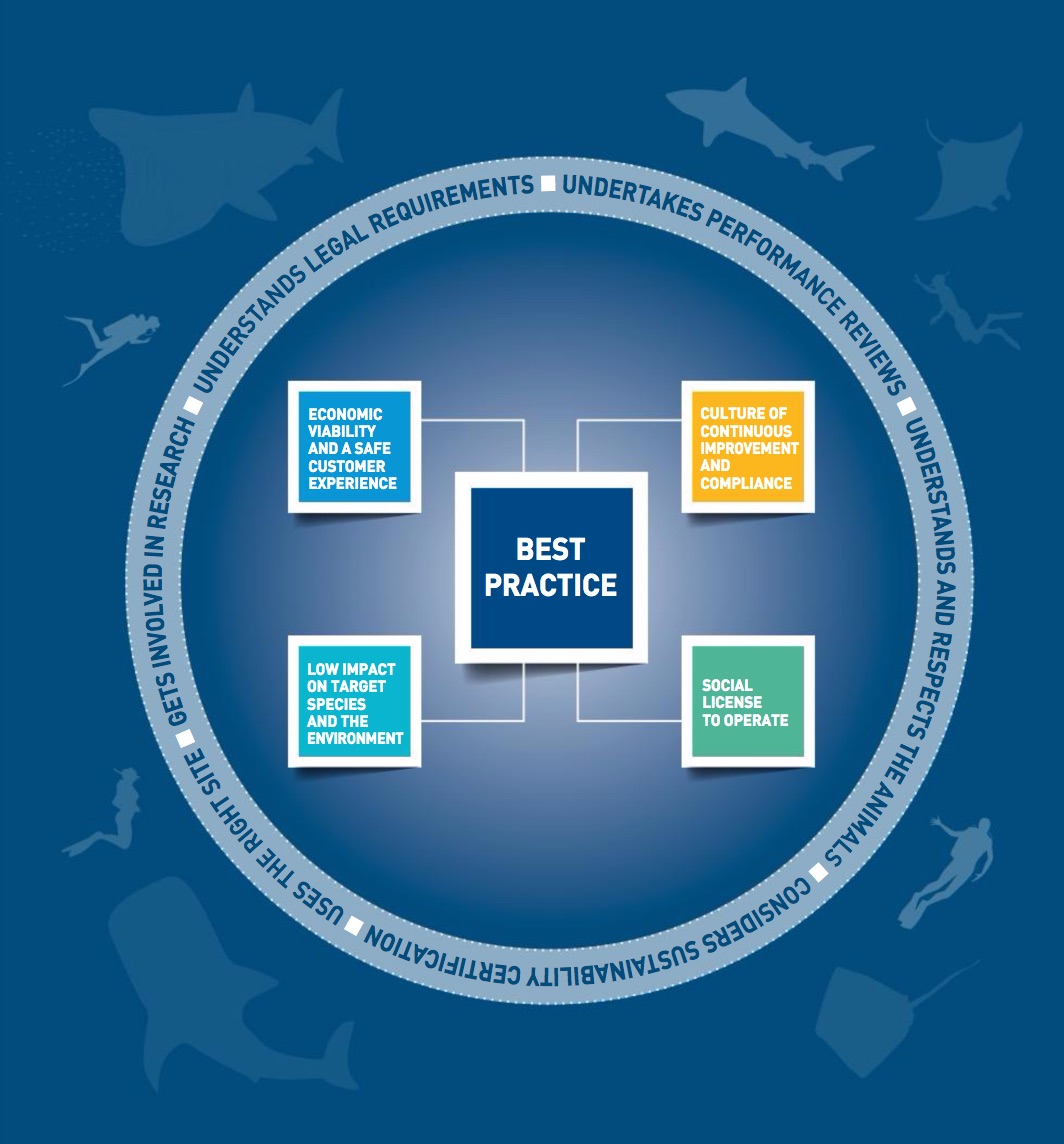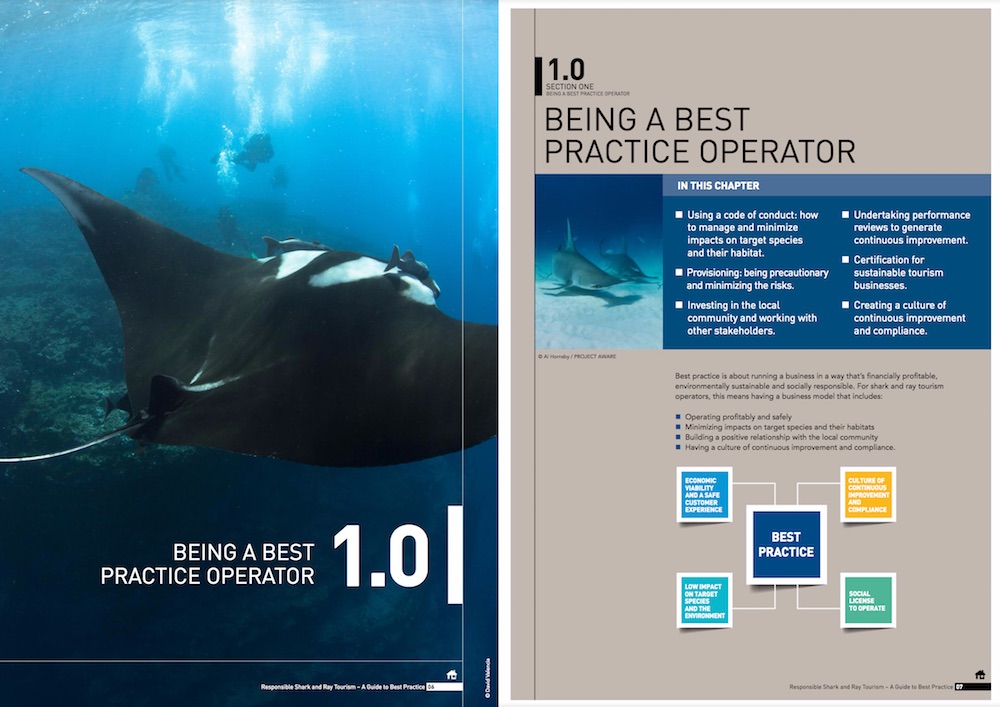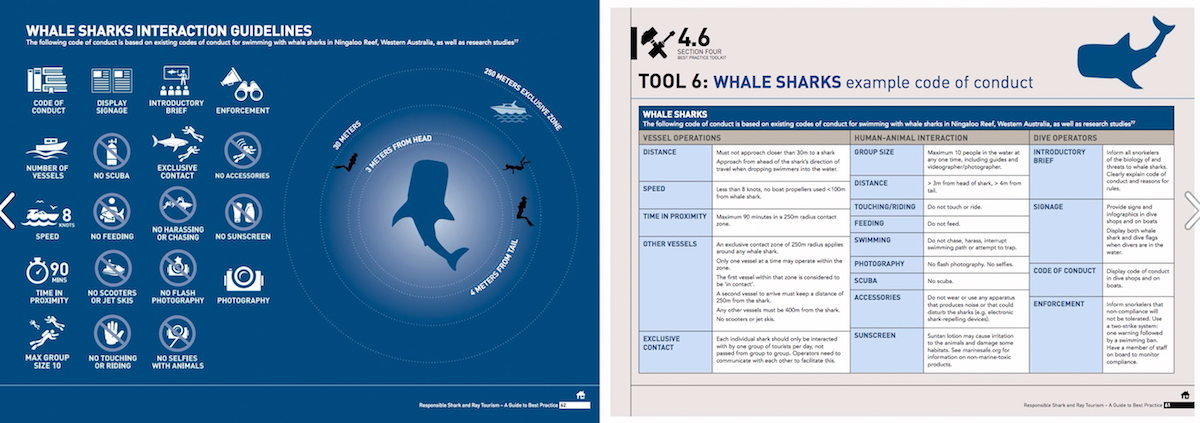Shark and Ray Tourism Guide
Shark and ray tourism is a major draw for scuba divers. Globally the industry has some 376 well-established tourism operations which focus on getting divers in the water with charismatic megafauna and apex elasmobranch species.
But with no guidelines or best practices, it is difficult to regulate the industry and ensure the safety and conservation of animal populations. Responsible Shark and Ray Tourism: A Guide to Best Practice, is the world’s first-ever guidelines for shark and ray tourism operators.
The Responsible Shark and Ray Tourism Guide was released by Project Aware, WWF, and The Manta Trust, March 3rd, to celebrate World Wildlife Day. The Guide aims to provide practical, science-based guidance to help tourism operators, NGOs and local communities develop and maintain well managed tourism operations that help conserve shark and ray species, raise awareness for their protection, and benefit local communities.
Download full Guide and tools in English – HIGH RES (23MB) – LOW RES (4MB).
What’s cool about this guide is the entire thing is available online for free. Tourism operators can download the guide which includes seven best practice toolkits or choose to download individual toolkits and code of conduct posters.
What Are Best Practices
When dive operators choose to be responsible for the environment, they offer the best possible experience to their customers. Best practice guidelines and toolkits help support dive centers, dive instructors, and tourism operators to improve education, safety, and sustainability of their business.
While a single interaction may not have a lasting effect on a species, dive after dive, year after year, the effect of human interaction can alter an animal’s natural behavior and may be harmful to their health. Best practices are a set of guidelines which are agreed to be the most efficient and sustainable path forward for an industry. In this case shark and ray tourism.

Using The Guide
The four pillars of the Shark and Ray best practices are: minimizing impact, operating profitably and safely, including local communities, and having a sustainable culture of improvement. We feel the fourth pillar is the most important.
The first step to implementing any conservation strategy is the passion and culture to preserve the environment. To make a difference, you have to want it.
Implementing this guide to the fullest involves performance reviews, sustainability certifications, and a commitment to research and local communities. The guide can help revamp or reenergize your shark or ray dive excursions but will take time and patience to complete.
This guide, however, is flexible offering checklists and example code of conducts, allowing you to tailor best practices for your local environment or country regulations. The code of conduct includes safe surface distances for motorizes vessels and recommendations for human-animal interactions at and below the surface.
The code of conduct guidelines for dive operators including any signage which can be beneficial to upholding best practice standards. You can download all of the animal interaction posters below.
Full collection of example posters (ZIP File 1MB) Source Project Aware
The Responsible Shark and Ray Tourism Guide contains case studies of shark and ray tourism operations including actions taken and lessons learned from these projects. The detailed guide has many helpful resources for dive operators to make the difference and commit to the safety and sustainability of their operation.
If you are ready to take the first step or already follow the best practice guidelines, this guide is sure to contain new insights and practical, science-based framework to help manage your operation.
Project AWARE is a global movement of scuba divers protecting our ocean planet – one dive at a time. Focused on the critical issues of Sharks in Peril and Marine Debris, Project AWARE empowers thousands to work together for a clean, healthy and abundant ocean planet.
World Wildlife Federation is one of the largest and most experienced independent conservation organizations, with over 5 million supporters and a global network active in more than 100 countries. WWF’s mission is to stop the degradation of the planet’s natural environment and to build a future in which humans live in harmony with nature, by conserving the world’s biological diversity, ensuring that the use of renewable resources is sustainable, and promoting the reduction of pollution and wasteful consumption.
The Manta Trust takes a multidisciplinary approach to the worldwide conservation of manta rays and their habitat through conducting robust science and research, while raising awareness and providing education to the public and community stakeholders alike.




